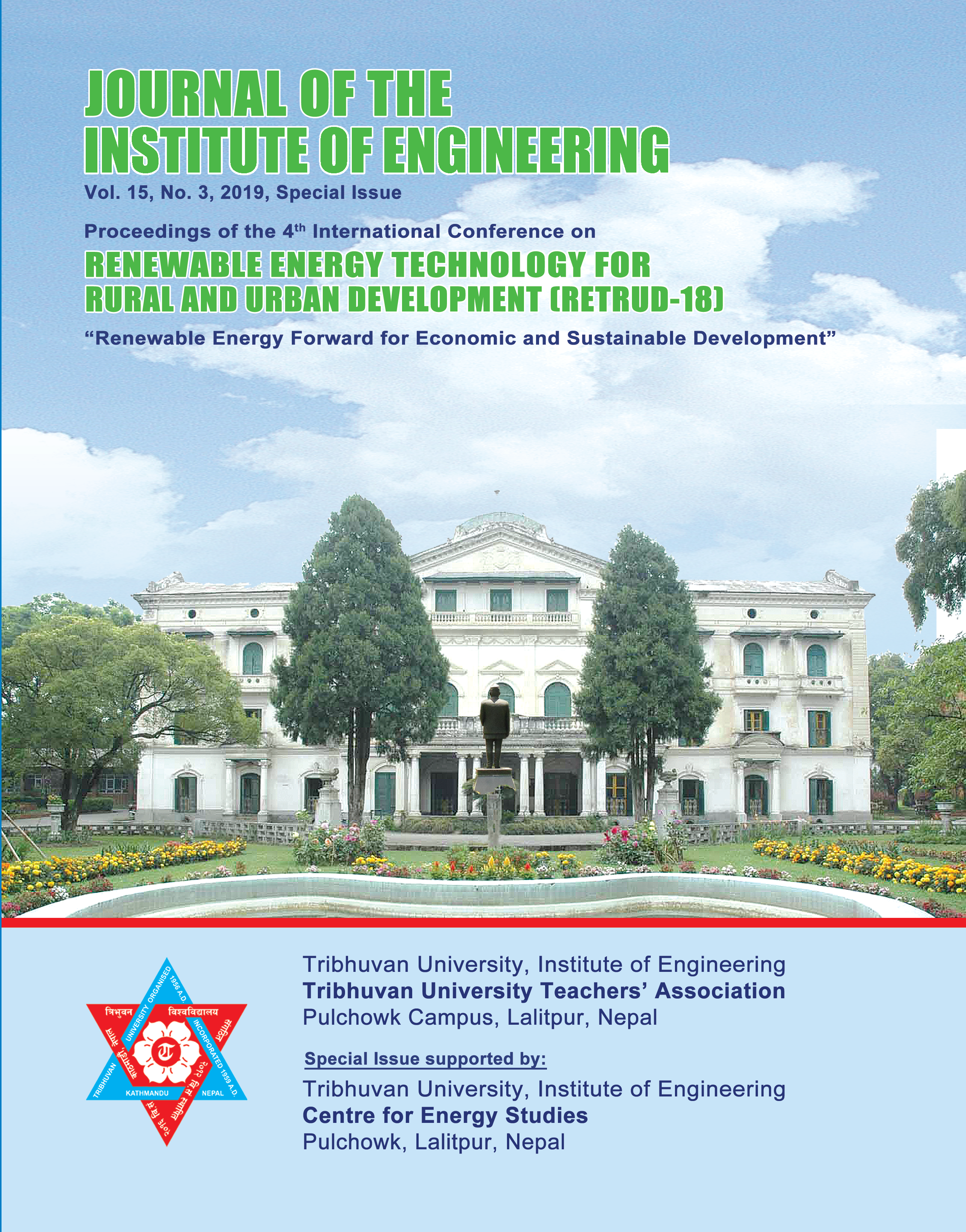Study on Household Energy Usage Patterns in Urban and Rural Areas of Nepal
DOI:
https://doi.org/10.3126/jie.v15i3.32761Keywords:
Household, Rural, Urban, Electrical Appliances, Income, Household Size, Energy SavingAbstract
In the last decades, the household’s energy demand has increased significantly in various countries including Nepal. In the case of
Nepal, 94% of energy use is in the domestic sector. There is a possibility of a huge increase in electricity production, but we are still
suffering from load shedding due to the high electricity demand. Electricity use is an important factor for the quality of life and
development of a nation. There is not a sufficient number of researches done about electricity consumption in different climatic
regions of Nepal which are analyzed by the income level of residents. This study gives descriptive information on the household’s
energy uses patterns and investigates the electricity use rate, using electrical appliances in households. This study also identifies the
major source of energy use and awareness of energy use. The data were collected from 442 households in three regions in the winter
season of 2018. Kalikot is a rural area, Chitwan is a semi-urban, and Kathmandu is an urban area. We have collected electricity bills,
family income, and family size, electricity using appliances, expenditure for energy and energy use for heating/cooling, cooking, and
lighting. The electricity was used only for lighting purposes in the rural area, but other electrical appliances were used in semi-urban
and urban areas. The amount of electricity use has not affected by household income level in the rural area, but it has affected in semi-
urban and urban areas. The level of education affects the use of the LED significantly. This study would be helpful to know the
electricity use patterns which is useful for energy saving and energy management of the rural and urban areas of Nepal.
Downloads
Downloads
Published
How to Cite
Issue
Section
License
The Copyright is held by Journal of the Institute of Engineering, IOE, TU




